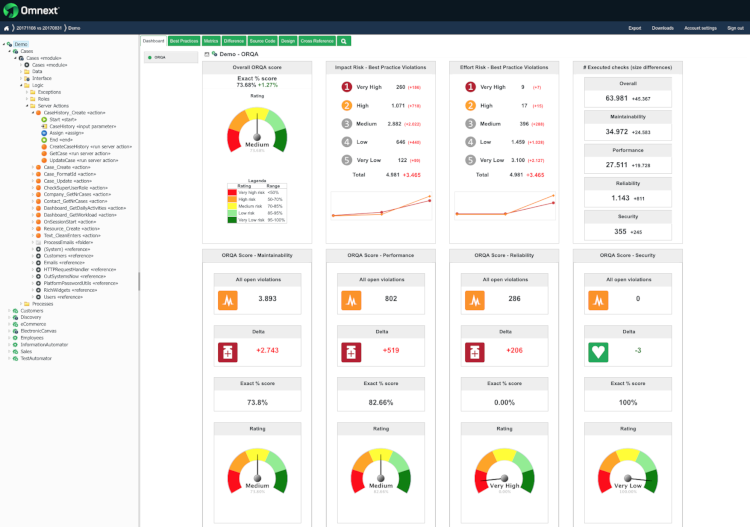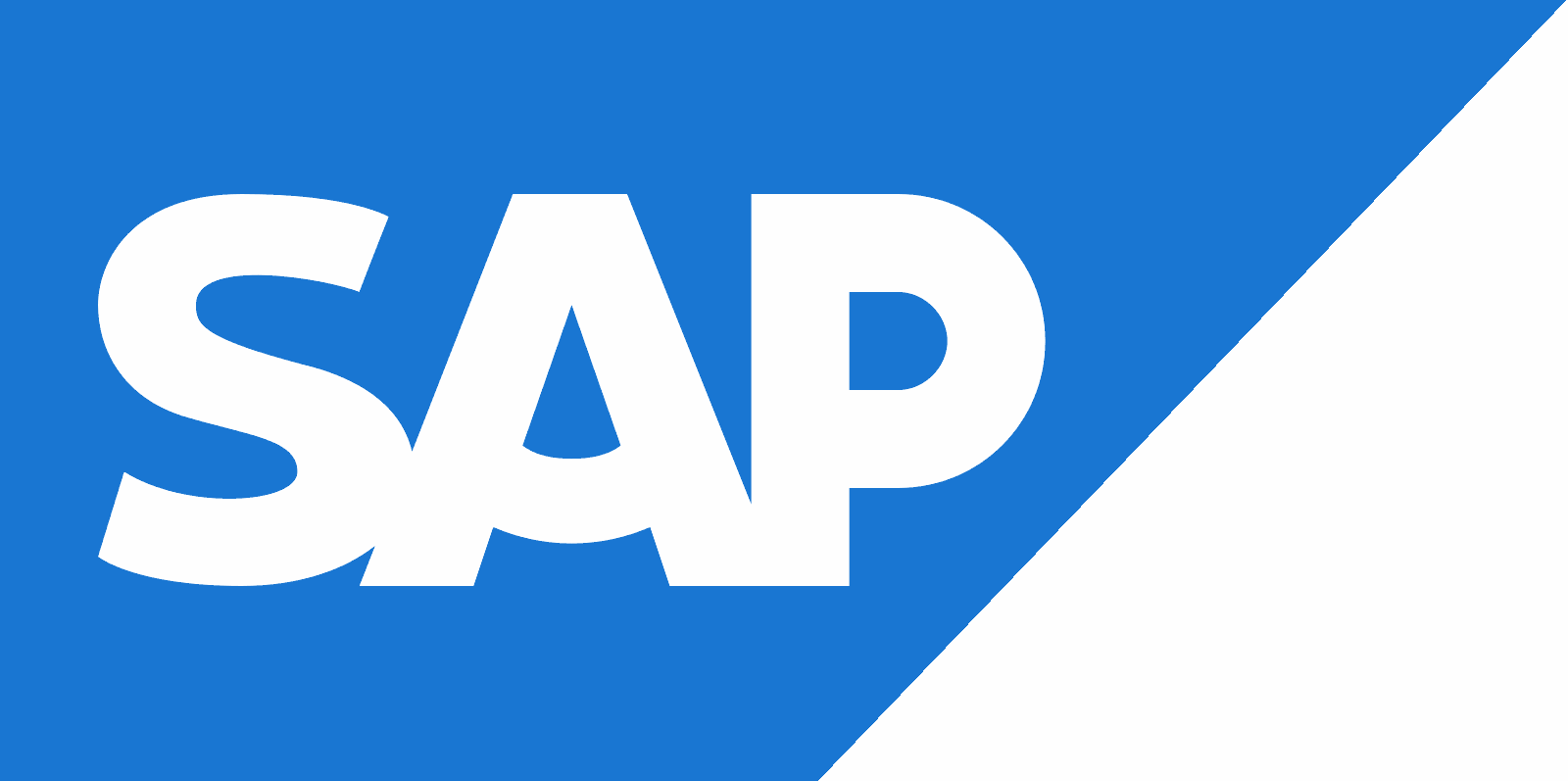OutSystems, Omnext Partner To Provide Low-Code Apps Access To Application Risk Analysis Services
Low-code platform provider OutSystems is partnering with Omnext, specialists in software risk analysis, to launch two new offerings to help users ensure their low-code apps conform to best practices for reliability, performance, security, and maintainability.
Low-code platform provider OutSystems is partnering with Omnext, specialists in software risk analysis, to launch two new offerings to help users ensure their low-code apps conform to best practices for reliability, performance, security, and maintainability.
The offerings, called Fit Test and Stay Test, are available as on-demand Application Risk Analysis Services – and are designed to enable organizations to conduct code-review to assure companies can quantify their apps meet their own quality standards.
IDN takes a look at each offering:
Omnext Fit Test provides a snapshot-in-time, deep risk analysis of code based on the ISO 25010 quality mode. Fit Test source code analysis helps highlight several areas of focus, including maintainability, security, and cloud fitness. All of the tests are based on Best Practices, standards and guidelines, which are integrated in Omnext Fit Test metrics of the source code analysis.
Omnext Stay Fit program lets customers to schedule a risk analysis that matches their development teams’ efforts. It promotes on-going and continuous measuring and monitoring of process details, based on a combination of industry Best Practices and a company’s own business rules. This provides more accurate and actionable info, compared to a one-off analysis.
Together, they provide a full lifecycle risk analysis solution for OutSystems apps. Omnext Fit Test provides a snapshot of an app’s current software risks. Customers can also sign up for a regular cadence of risk scans with the Stay Fit program. Results of the analysis are presented in an elegant dashboard within the Omnext Portal. A point-based scoring system makes issues easy to identify.

For its part, the OutSystems platform combines the benefits of low-code with an open, standards-based platform with automation and flexibility. In specific, it offers a no lock-in, no proprietary data models without the need to run apps with a proprietary run-time.
OutSystems’ approach to low-code let developers wrap the existing code into a visual (drag-and-drop) model to use low-code where appropriate, and combine such components with customized, reusable code snippets and extensions – at any layer of an app. OutSystems analyzes all models and immediately refactors dependencies. Further, when a user modifies a database table, and all queries are updated automatically.
In his blog, OutSystems senior director of product marketing Mike Hughes highlighted the value from partnering with Omnext
Omnext is a company focused on providing automation solutions that ensure the quality of software written in over 30 different languages. They help organizations answer the following types of questions across a portfolio of OutSystems applications:
- How has the maintainability changed since the last sprint?
- How do the code quality and productivity of my scrum teams differ?
- How can I reduce my maintenance costs?
- To what extent are components re-used
IT teams using low-code platforms are moving faster than ever, so it’s imperative that the code we build or layer onto existing systems isn’t introducing new legacy debt. These new services developed through our partnership with Omnext offer peace of mind to organizations. They now have a way of knowing that new apps and functionality aren’t introducing unnecessary risk and won’t impact service delivery or availability.”
Hughes went on to detail how the OutSystems/Omnext partnership helps avoid what customers often think is a trade-off between speed and other attributes often seen as important to ‘code maintainability’ of their low-code apps. “Speed without quality can result in a poor architecture that, in turn, leads to issues in areas like performance, security, or maintainability,” he added in his blog.
Hughes went on to describe how OutSystems and Omnext have teamed up to leverage the power of automation (among other capabilities) to address two important considerations when talking speed – quality and control.
Speed vs. Quality: Speed versus quality is a classic balancing act that applies to the process of building software. For those who prioritize quality, it makes sense that there would be a healthy skepticism of development platforms that promise greater speed. “If a platform helps a developer build software ten times faster, surely this will lead to quality issues,” might be the thought process.
To address this concern, it’s helpful to substitute the word “speed” with “automation.” The speed increases delivered by low-code development platforms relate to things developers no longer have to do. Various studies show that as much as 60–80 percent of development time is spent on repetitive activities. The way we write code to take data from a database table and present it on a screen doesn’t vary much from screen to screen. The way we ensure a screen displays well regardless of form factor tends to be the same for each screen. The way we ensure security, internationalization, accessibility… you get the picture.
Speed vs. Control: This claim of 10x development speed is often perceived negatively by developers who worry they are losing control over the “code” of their application. I think of it differently. My first coding job was in assembly language, and it took forever to do even the most basic things. When macros were introduced to automate instruction coding for assembly, there was a similar concern from developers: “I don’t like it! I’m losing control!”
When I transitioned to C++, I didn’t once miss loading registers or trying to squeeze code into a 4k segment—I was able to focus instead on what the software needed actually to do. Then came Java. No more worrying about garbage collection or wrestling with apps that needed to run on more than one operating system or platform. This felt like nirvana compared to before.
Each of these language evolutions automated many of their predecessors’ tasks; tasks that consumed so much of my time as a developer. Instead of hunting down memory leaks, I could focus on solving the business problem. The automation that low-code development platforms provide is the reason teams are able to deliver software substantially faster. I would say that those who worry about this being a loss of control are just kidding themselves. To me, that’s like worrying about what happens to your Javascript code after it is written.
Firms such as KPMG are already making use of the Omnext services for OutSystems to help their clients identify and remediate potential risks in generated code before it can impact critical production environments, according to Joost Koedijk, an official with KPMG’s partner digital enablement.
“OutSystems delivers a platform that can take a lot of the burden out of the developers' hands when adopted successfully.
Development is rarely perfect and errors can, and usually will, occur. Tools like Fit Test 4 OutSystems by Omnext allow us to do an efficient and automated deep-dive into the technical quality of the developed software and help our clients improve the quality and maintainability of their solutions,” Koedijk said in a statement.
“As part of the launch of these new services, Omnext and KPMG are offering each OutSystems customer a free analysis of one of their apps (Quick Fit Test). The output of the scan will include a high-level report expressing an overall quality risk indication,” he added.
KPMG was named an OutSystems Partner of the Year in 2018.
A free one-time only special version of the Omnext / OutSystems Fit Test is available for companies with a valid OutSystems license. Readers can register for a free Quick Fit Test here.









